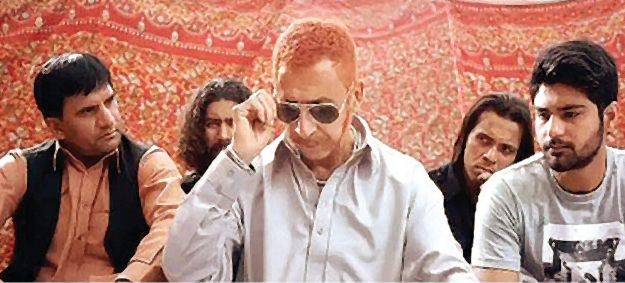Much like the reactions to her Oscar-winning documentary Saving Face, the response to Sharmeen Obaid-Chinoy’s initiative to form Pakistan’s first Academy award committee also oscillates between warm and lukewarm. Till last week, Pakistan did not have an Oscar committee to shortlist feature films and forward to the Academy for consideration. But while film-makers welcome the move to put Pakistani films on the map, there are some who feel that Obaid-Chinoy’s Oscar victory does not legitimise her credibility to select the committee members.
“We are excited and happy about this development but some questions remain unanswered,” says Shahzad Nawaz, writer and producer of Chambaili. “You and I can gather like-minded people and form a committee, too, if approved by the Academy. But who is to say that this committee is ready to screen films?”
Nawaz echoes the feelings of film-makers when he says that a committee formed to finalise a submission should take film-makers into confidence instead of operating like an isolated hegemony. “Nobody contacted me even though I have a share in the market,” he adds.
Nevertheless, Nawaz plans to submit Chambaili for an entry if he is approached. He adds, however, that committee members should introduce themselves to the film fraternity in order to ensure transparency – after all, their submissions will become how the world sees Pakistan.
“Both Iran and Pakistan won Oscars last year for films that humiliated and degraded their countries. I don’t propose showing just a rosy picture but I am a patriot and there are certain ways of managing perception and taking your image forward. I’m not saying we should just show flowers and not show the thorns – but at least we should show them in context,” he asserts.

He isn’t the only one questioning the committee’s legitimacy. A well-known film-maker who spoke on condition of anonymity shares his sentiments. “You have academics, theatre artists and actors in this committee, but not a single member is currently making mainstream feature films,” he says.
But as with every debate, there are advocates. Main Hoon Shahid Afridi producer Humayun Saeed believes that the formation of this committee is a winning situation for independent young film-makers in Pakistan.
“It is a positive step in the right direction,” says Saeed. “The doorway to success is now open and it’s a win for upcoming film-makers. Maybe one day I will make a film which is worthy of an Oscar entry.”
Director Jamshed Mahmood Ansari feels that any good development in our country is met with negativity and feedback. “I knew that there would be a huge conspiracy theory surrounding this subject. Pessimism has taken over our environment so much, that there is hardly anything happening in the right direction,” says Ansari.
Ansari recalls that similar theories were circulating when Atrium Cinemas was built and people made fuss over how the whole thing will eventually turn into a monopoly. “That was unbelievable! People criticising the committee haven’t done anything significant for the country,” he adds.
In her defence, Obaid-Chinoy explains the committee’s formation. “The process of forming a committee of this nature is a matter of the country choosing to apply for such a committee. Thus, the responsibility falls on the film-makers of that country, and not the Academy. While I am unsure [as to] why we failed to submit a film for 50 years, I assume that it is due to our film industry weakening, on a whole,” she says.
“We had to submit a list of committee members to the Academy who then vetted and approved our nominations. We were advised to submit a diverse list of members, from directors and actors to academics and writers. We received approval soon, thereafter, and are now in the process of soliciting submissions for consideration in 2014 award cycle.”
At the end, even if this committee is endorsed by the government, it will be viewed by some as an isolated lobby. Another question that begs to be answered is which films Pakistan will send forward to the Oscars; the most aesthetically and technically sound or one that revolves around the themes, subjects and treatments that are likely to get attention from a western audience?
The answers are not simple, but given Obaid-Chinoy’s Oscar win for a subject that depicts the plight of acid attack survivors, and the subsequent formation of this committee, now may just be the right time to raise concerns.
Published in The Express Tribune, August 12th, 2013.
Like Life & Style on Facebook, follow @ETLifeandStyle on Twitter for the latest in fashion, gossip and entertainment.























